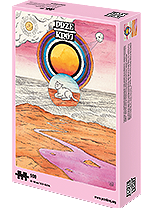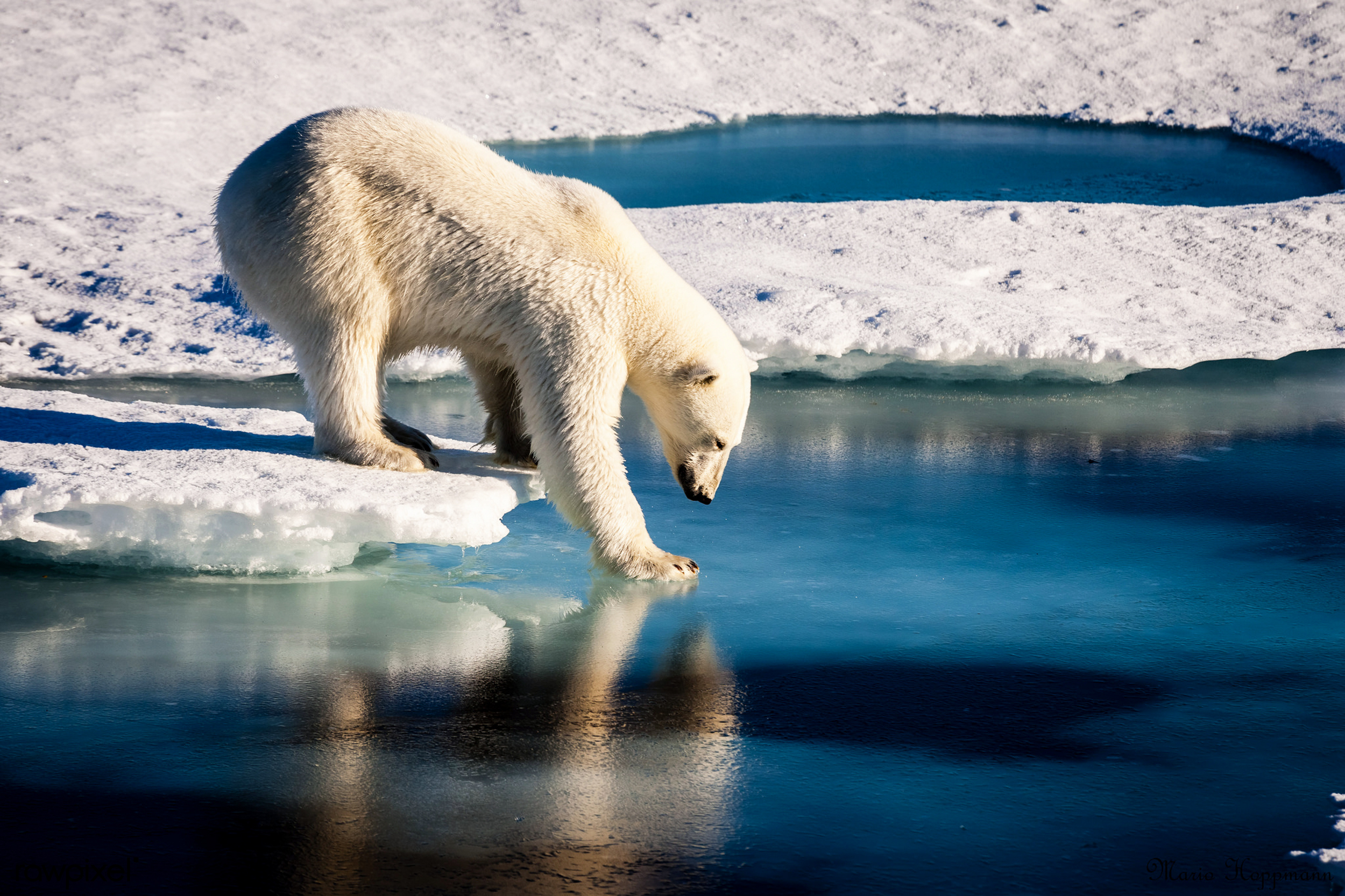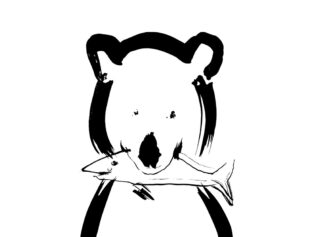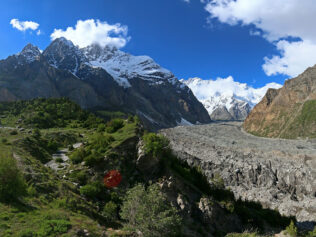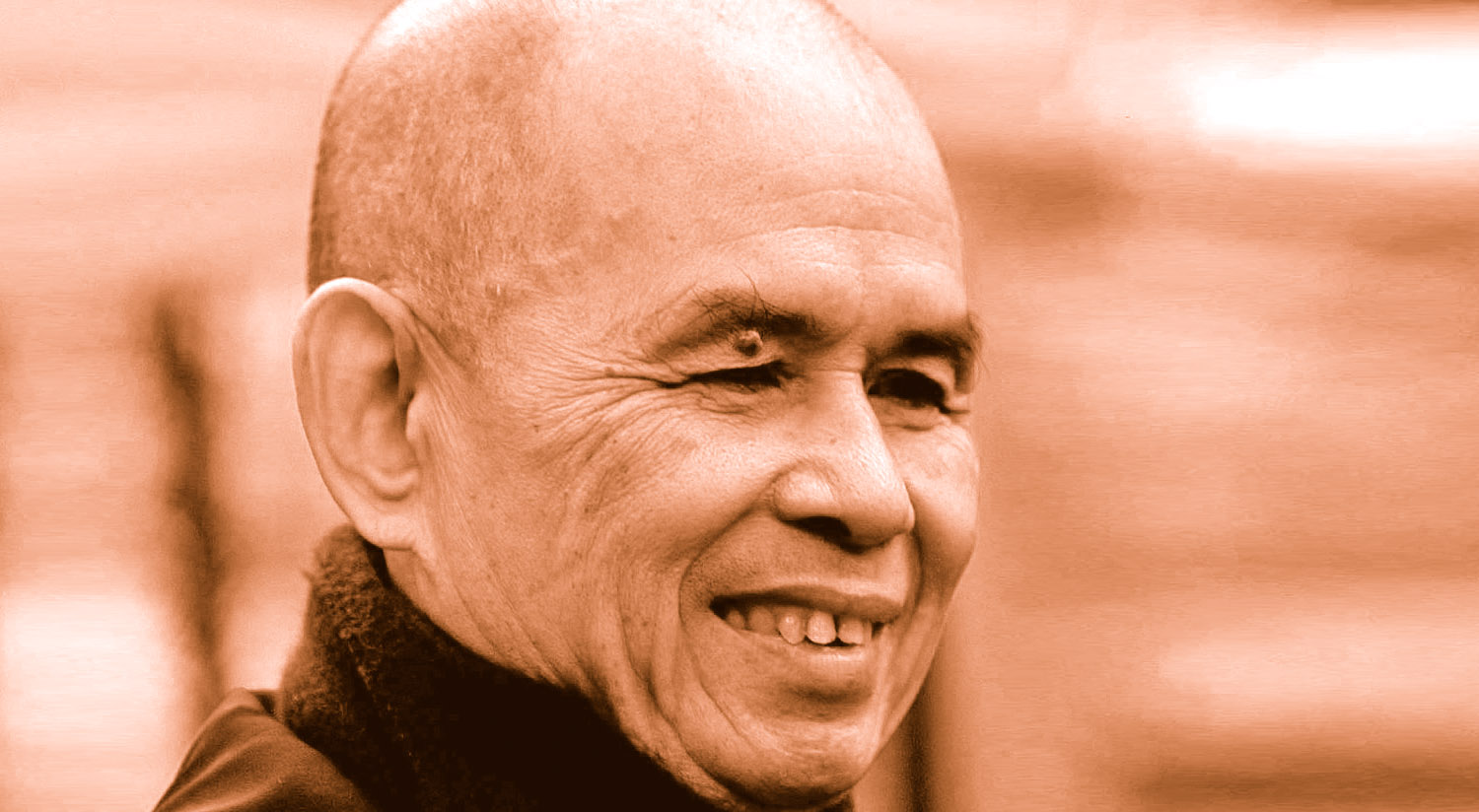
There’s winter swimming, and then there’s winter swimming. The Wim Hof Method isn’t just about taking a dip in cold water. It’s a practice of embodiment, a way of exercising awareness. Andrzej Hrycaj, a cold water swimming instructor specializing in the Wim Hof Method, explains what we can gain from taking an ice cold dip.
Maria Hawranek: How did you end up in cold water?
Andrzej Hrycaj: I used to live inside the bubble created by our civilization: overheated rooms, a comfortable life. But comfort can also cause suffering. I was going through a mid-life crisis when I read in one of Orhan Pamuk’s novels that people become lone wolves once they reach middle age. His words terrified me. Wim Hof was my way of finding something of my own in life, even though at first I was very sceptical. I had come across his method many times, but I kept on thinking, no, that’s not my thing. Finally, I decided I had to meet him. I have the impression that nowadays, everyone seems to know everything, and our smartphones are full of people who pose as authority figures. So three years ago I took a trip to the Netherlands to meet the man who claims he isn’t part of the consumerist world. After reading What Doesn’t Kill Us by Scott Carney, an investigative journalist who set out to expose Wim as a false guru, but finally became his fan, I wanted to see for myself if there was an honest man behind the method.
Was there?
The workshops were great: we entered the cold water together, a group of people from all over the world. Wim is fantastic on stage, he speaks brilliantly and cracks jokes. But I wasn’t entirely convinced after the cold bath itself. The breakthrough came later, when we sat down by the fire in the evening and the talking stick was passed around. That’s when I realized that Wim really was a part of the group, present and carefully listening. Then I felt the true meaning of Gandhi’s words: that if you want to change something, start by changing it in yourself. That’s what Wim’s Method is to me.
It’s based on three elements: cold therapy, breathing techniques, and mindset. I find that the latter sounds the most mysterious.
Your attitude changes every practice you undertake, that’s why the placebo effect exists in the first place. It’s important to embrace the experience, to be fully aware of your body in the cold water.
So instead of gritting my teeth to power through the cold, I should embrace it?
Yes. I want to see how I react to it. The Wim Hof Method says: feeling is understanding. We leave our rationality behind and tap into the intelligence of the body. We all have the necessary resources, we just need to access them. Wim purposefully bases his method on scientific sources, so that people who are sceptical about spiritual practices understand that, for instance, the neurological benefits of conscious breathing are actually based on hard evidence.
Exactly, breathing. What about it?
In any therapeutic or yoga method you practise, breathing is always the most important portal to presence. Breathing is the easiest way of returning to the body. The Wim Hof Method isn’t about taking an icy dip with cool people. It’s a practice of embodiment, a way of exercising awareness. That’s when we really start channelling our experience. We can truly feel what is happening around us. It’s difficult to put into words.
But when and how do we start practising breathing? Could these techniques be compared to the yogic ujjayi breath?
Wim Hof’s most popular breathing technique is controlled hyperventilation. You let out carbon dioxide and that causes chain reactions in your body, resulting in a lower pH, among others. Then you hold your breath, which also has a therapeutic potential. For your brain, it doesn’t matter if you hold it, because you’re exercising or drowning on a sinking ship. The adrenaline rush is the same as when you go bungee jumping, with one big difference: you are in a controlled environment. Even though you don’t see any tiger ready to pounce on you, your nervous system is on high alert, your senses are extra-sharp. Just like when your phone rings because your child twisted their ankle in pre-school and you have to rush to pick them up. Nothing else matters on the way. These breathing exercises charge you up. It’s good to do them in the morning to feel high-spirited and energetic.
How long can you hold your breath for?
My record is four minutes, not much. But this isn’t a race to break records! It’s about getting the best for yourself out of it, not bragging on Facebook. Seeing your own world, your limits. Not competing against one other.
Like with yoga – you can push yourself to the limit and ignore your body, but then you realize that it’s not true yoga practice.
Yes. It seems to me that Wim Hof’s popularity stems from the fact that his method sounds sexy: cold water swimming, breathing… and it’s also easy to stick to, you don’t need a bike that cost thousands of dollars, and you don’t have to start off as a four-year-old to do it well. The method is available to all, but there is no end to discovering it. It resembles playing the piano: maybe you want to play “Chopsticks”, and maybe you want to play something beautiful. That’s where practice comes in. The whole process counts – not just ice swimming from time to time with your friends.
Do you do the breathing exercises before immersing yourself, and then you breathe normally in the water?
Breathing consciously is always good, and it also helps in the water. But when you submerge yourself, it feels like jumping into the Baltic Sea at 16°C (60°F): shortness of breath causes panic. Doing breathing exercises beforehand allows you to avoid this reaction and stay calm in the water. Everything is connected, you get the opportunity to check and control yourself. People who start practising gradually notice that breathing consciously and cold water swimming help them develop an inner reaction mechanism: even when something happens, even when there is an adrenaline rush, they don’t have to react immediately. And there are plenty of sabre-toothed tigers in our daily life.
So this method has similar effects to mindfulness practices – it gives us the opportunity to control our impulses instead of reacting spontaneously. But please tell me more about the third element: cold therapy. How does it influence the body and the mind?
Cold therapy strengthens the blood system. Blood vessels contract and then expand once again, a process that helps them stay flexible. One more thing: markers of inflammation are altered.
Which means?
When we get a bump, we use ice pads to reduce the swelling. Practising cold water swimming can be compared to covering ourselves in ice pads: the cold reduces all sources of inflammation in our body. And inflammation is universal. That’s the way we live: stressed out because of work, family issues, deadlines, the pandemic. Studies were conducted among followers of the Wim Hof Method, and one of them, a pilot study on autoimmune diseases, showed that it soothes autoagressive mechanisms. A Polish doctor named Jan Czarnecki conducted a study on soothing treatments for eczema and psoriasis. Australian researchers are also studying ‘deemotionalization’, the stabilization of emotions: Wim’s method helps us experience them in a deeper, more authentic way. What’s more, other studies have shown that it improves fertility. All of these positive outcomes are side-effects of reducing inflammation, which plays a key role in various illnesses.
What about the mind?
If you’re asking about neurobiology, we produce a variety of hormones during cold water swimming. The endorphins that change our mood on a daily basis – opioids, which are the chemical equivalents of opiates, naturally produced by the human body. They reduce pain intensity: it is our natural defence mechanism when it comes to feeling cold or minimizing suffering in general. These positive side effects may be seen in a wider context: we stop focusing on the painful aspects of life that are part of our everyday routine.
How long do the participants of your workshops stay in the water?
Before someone attends my workshops, they have to complete a 20-day cold shower challenge. They start with 15-second showers (anyone can take that much, even though they may scream a bit), then they gradually extend the shower times. The maths is important: there has to be an element of challenge, the bar has to be raised gradually, because the adaptation mechanisms won’t kick in without the right stimuli, and we won’t be able to improve the heating capabilities of our thermoregulatory system. But we also have to avoid traumatization or becoming ill. So adjusting time and temperature in the right way is crucial. Workshops are different, because the magic of the group does the trick. I’ve never had a participant stop mid-way. Someone is always willing to go in first and show how brave they are, and when the rest of the group sees they’re alive and well in the water, they follow. We start with a two-minute swim, and on the second day we add another minute or two.
Is that a lot?
It isn’t, and it doesn’t have to be. I see lots of pressure in Poland to break records, in cold water swimming as well. If we take into account the therapeutic processes that are constantly happening in our bodies, I think people traumatize themselves. Pushing yourself to such an extent cannot be good for you. You may not feel anything bad happening to your body if you stay in the water for 15 or even 30 minutes – it has no immediate effect – but you do end up traumatized, just like a sportsperson who trains in one sport for a few years straight, and, in consequence, doesn’t develop harmoniously.
At the same time, you’ve been saying that we need to challenge ourselves.
Yes, challenges are great. For instance, Wim and I organized the Śnieżka Expedition – we trained hard for five days, and on the last day we climbed the Śnieżka mountain in light clothes and freezing weather. However, we were well-prepared and accompanied by a paramedic. The experience of overcoming yourself in such a way changes a lot in your mind: when I find out I’m capable of doing something that seemed way out of my reach, it gives me a gigantic energy boost. Nonetheless, pushing our limits always requires balance.
Prepping, company – what else would you add to these safety measures?
Caution and consulting any possible contraindications with a doctor, such as pregnancy, ongoing psychotherapy or high blood pressure (since our blood vessels contract during cold water swimming, the pressure goes up). You shouldn’t do it on your own, relying solely on YouTube tutorials.
You once wrote about activating brown fat. What does this mean?
It became a popular subject of scientific research about 10 years ago. White fat is the kind of fat most of us don’t like. Brown fat is the kind babies have when they are born, on the nape of the neck or in the intercostal spaces. It’s an efficient fuel that keeps us warm. We didn’t always use to be born in heated rooms, at 20°C (68°F). People who lived in primal times had brown fat as adults as well, but it disappeared from the modern human body because it stopped being necessary for survival. But brown fat can be restored. If we stay outside at 18°C (64°F) without outer clothing, our body gets the signal to start regenerating brown fat cells. The fat is dark because its cells have mitochondria that improve metabolism, unlike white fat cells, hence their colour.
I’ll ask you the same question you once asked Wim. Monks who practice tummo meditation are capable of drying wet towels with the heat of their own body in freezing temperatures, can melt snow within a few metres and intentionally raise the temperature of their bodies by 8°C (46°F). When you asked him about this warm-on-demand phenomenon, Wim said: forget about all that garbage. Could you answer less enigmatically?
Practice is key. To elaborate on the piano example, someone does piano exercises, studies sheet music, and experiences a breakthrough after a few years – suddenly, they start playing. Another example: I’ve been practising handstands for two years, and I was only able to do one recently. If you say “shoulders back” to someone who has spent the last 10 years on their couch, you’ll be surprised that they don’t understand what you mean. But try as they might, they won’t know what to do, because they’ve lost their body awareness and it has to be reawakened. Our bodies hold various resources and undiscovered paths. We can try finding the portals that will take us where we want to be.
Are you able to increase your body temperature?
I’ve experienced it, but I can’t control it. I’m training under the guidance of my Tibetan teacher Tulku Lobsang Rinpoche, who completed a traditional three-year retreat, drying towels in solitude. His school requires that you dry a towel 21 times: you dry it, they soak it in cold water, and you repeat the process, over and over again. I haven’t been able to do it yet, not once. But during our yoga workshops we produced so much heat that a puddle of water appeared around my mat. It’s a process. The more present you are in the practice, the better it works, regardless of what you’re practising. You get up in the morning, make yourself a cup of tea, and you’re into it 100%. The Wim Hof Method introduces magic into everyday life to make it fuller.
Parts of this interview have been edited and condensed for clarity and brevity.
Andrzej Hrycaj:
An instructor of the Wim Hof Method. He runs the Inner Fire project and conducts workshops in Przesieka in Lower Silesia. He is a forest bathing guide.
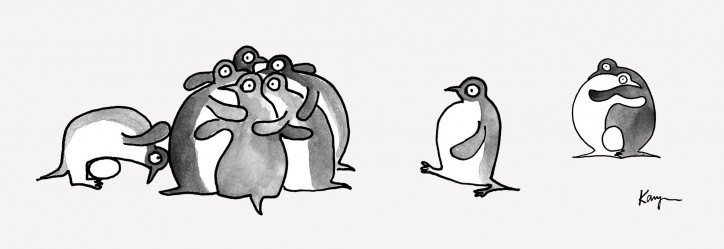
Translated from the Polish by Joanna Piechura

